Did you know? According to recent projections, up to 50% of retail businesses in urban areas could integrate AI autonomy in robotics by 2027, transforming everything from customer service to inventory restocking. If you run a local business or manage marketing for a small enterprise, understanding how to leverage autonomous robots can set you ahead of the curve—without causing managerial migraines or staff resistance. In this article, we break down the essentials, benefits, and practical strategies to help you solve AI autonomy in robotics for your company, headache-free.
Why AI Autonomy in Robotics is the Next Big Game-Changer for Local Businesses
For local businesses, adopting AI autonomy in robotics isn’t just about keeping up with technology trends—it’s about survival, differentiation, and unlocking levels of efficiency that were once thought impossible for smaller players. Picture this: autonomous robots quietly clean shop floors after hours, restock shelves, and even greet customers—all with minimal human input and maximum precision. While it once seemed like something out of science fiction, this evolution is happening now in cities across the globe, and it’s fundamentally rewriting the rules of competition in retail, hospitality, and services.
Most business owners are surprised by how quickly the landscape is evolving. Robotic systems, powered by advances in neural networks, computer vision, and artificial intelligence, are enabling machines to perform tasks previously requiring complex human decision-making. No longer are autonomous robots reserved for high-budget industrial giants; mobile robots are now affordable and adaptable for shops, cafes, gyms, or even local warehouses. If you hesitate, you risk missing out on the opportunity to outperform your competition and delight your customers with seamless, reliable service. So, how fast is this moving? Let’s look at the stats.
Shocking Stats: Just How Fast AI Autonomy in Robotics is Changing the Business Landscape
Recent studies reveal that the number of operational autonomous robots in local businesses is doubling every two years. In 2023 alone, sectors like retail, logistics, and hospitality saw a 38% increase in robot deployment rates. Experts predict that one day, the question won’t be “Should I use autonomous robots?” but rather, “How many robots per store do I need to stay competitive?” Forward-thinking local enterprises in San Francisco, London, and Singapore are already marking double-digit percentage boosts in productivity and customer engagement. By automating routine, repetitive, or late-night activities, these businesses are slashing costs and freeing up human employees to focus on creative, high-value work.
This disruption is only expected to accelerate. As advances in artificial intelligence and sensor technology allow robots to make decisions and complete complex tasks independently, it becomes clear: AI autonomy in robotics is not just a trend, but a competitive imperative. Whether managing inventory, answering customer questions, or optimizing energy use after closing, smart autonomous robotic systems can deliver tangible business advantages—if you know how to implement them strategically.
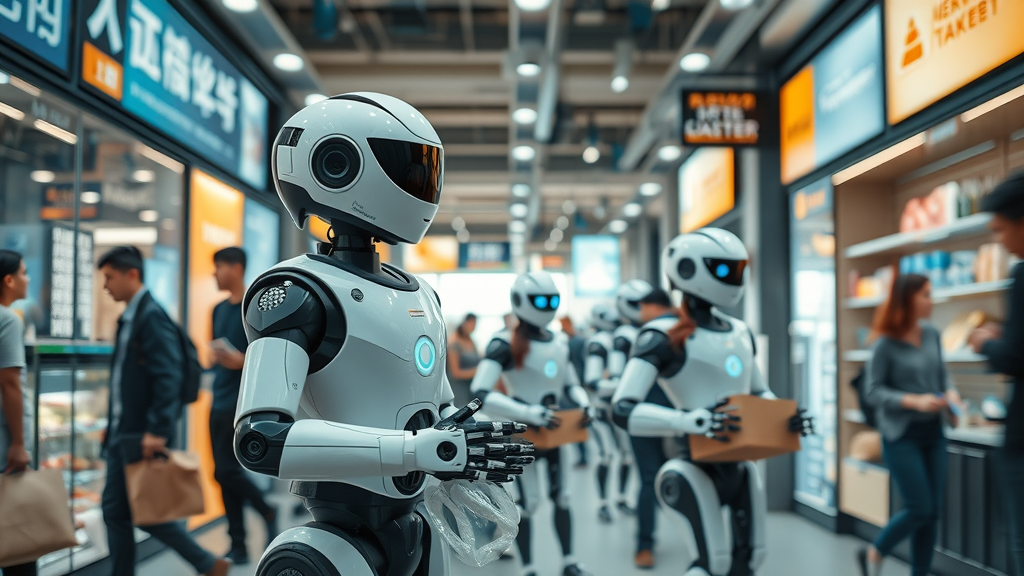
What You'll Learn About AI Autonomy in Robotics, Autonomous Robot Systems, and Business Potential
- Understand AI autonomy in robotics basics
- Explore how autonomous robots offer solutions for business operations
- Practical tips for leveraging autonomous robotics without pain
- Real-world quotes from thought leaders in AI and robotics
- Get answers to common business-owner questions
Defining AI Autonomy in Robotics: What Local Business Owners Need to Know
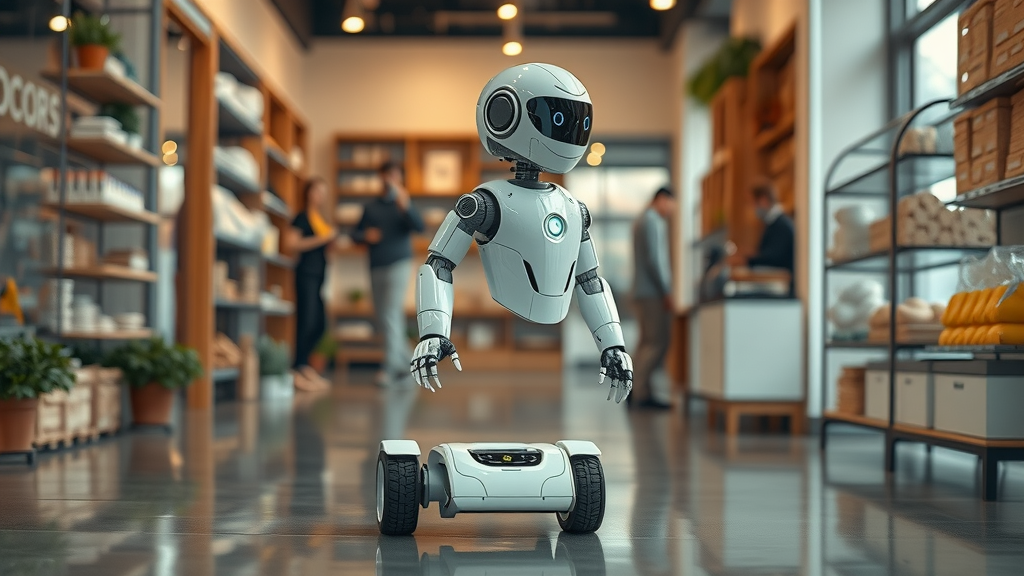
The Essentials of AI Autonomy in Robotics
AI autonomy in robotics means equipping robots with the ability to make decisions and act on their own, based on data and real-time feedback from their surroundings. For local business owners, this means robots won’t just follow set scripts—they’ll adjust to changes in the environment, handle unexpected problems, and even learn from new situations. Imagine a mobile robot that senses a spill and quietly takes care of it, while another monitors inventory and restocks shelves right when needed. By minimising human intervention, intelligent robots not only boost efficiency, but also improve safety, accuracy, and customer experience in ways manual systems never could.
"AI autonomy in robotics means robots can independently make decisions based on data from their environment, a transformative leap for modern enterprises."
Unlike traditional robotic systems which rely on pre-programmed, repetitive motions, autonomous robots are powered by advanced artificial intelligence, neural networks, and computer vision. They’re designed to perform a range of tasks—and get better over time—adapting to your business’s unique patterns. This shift is redefining what it means to be a competitive local business, and those who embrace it early will stand out in a crowded market.
Autonomous Robot vs Autonomous Robotic vs Autonomous Robots: Navigating the Terminology
- Autonomous robot: A single machine performing tasks independently
- Autonomous robots: Networked machines that collaborate
- Autonomous robotics: The field or system itself
The right terminology helps you communicate with vendors and technologists. Autonomous robots work best when integrated into business operations with clear goals. By understanding these distinctions, you can choose a solution that fits your scope—whether it’s a lone intelligent robot moving inventory, or a team of mobile robots managing complex logistics.
How Autonomous Robots Work: Inside the Minds of Modern Machines
Understanding Robot Autonomy and Autonomous Systems
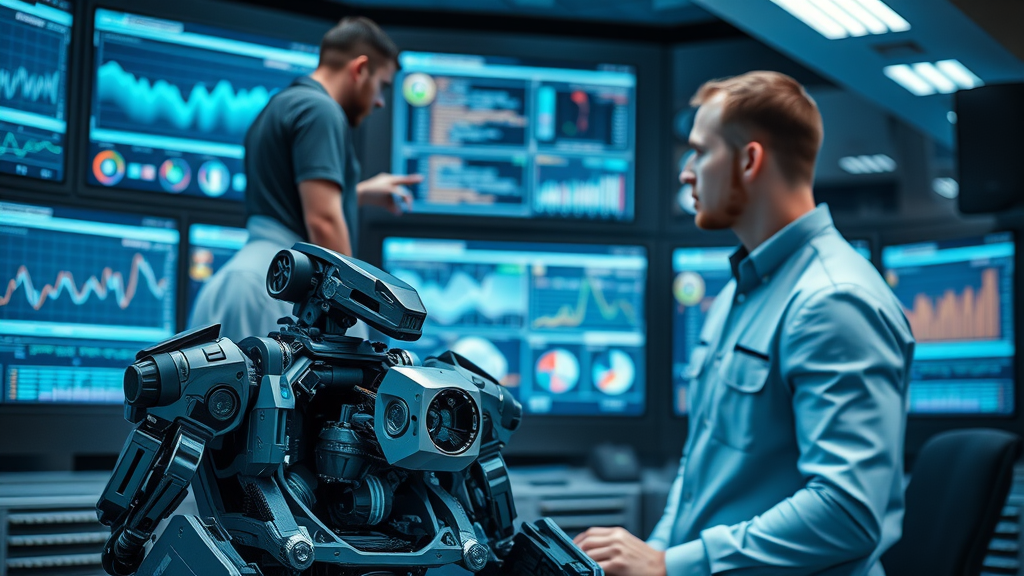
At the heart of robot autonomy and autonomous systems is the ability to work without human intervention. Advanced autonomous robotic platforms blend a mosaic of sensor technology (visual, tactile, audio, and even chemical), neural networks, and decision-making algorithms. These allow robots to detect obstacles, recognize objects, and make rapid judgements in real time—all key for dynamic environments like busy shops or restaurants.
Today’s intelligent robots can adjust to shifting customer flows or changing storefront layouts. By using machine learning, they continually fine-tune their performance, learning from data and direct experience. The best autonomous robots can communicate with other devices, update their own software, and even flag potential problems before they occur, helping ensure that business operations run smoothly and safely.
From Simple Bots to Advanced Autonomous Robotics Systems
- Sensors and perception: Visual, audio, and tactile sensors help robots make sense of their environments.
- Decision-making algorithms: These define how a robot responds to inputs, chooses actions, and adapts to new situations.
- Machine learning and adaptability: Over time, robots become better at completing tasks, predicting needs, and handling exceptions.
What does this mean for your business? Whether deploying a single mobile robot or a fully autonomous robot fleet, your investment can grow with your needs—moving from simple, repetitive assignments to more complex tasks, as your operations evolve.
Watch: How Autonomous Robots Perform Everyday Business Tasks
AI Autonomy in Robotics: Benefits for Local Businesses
Increased Efficiency and Reduced Labour Costs
The implementation of autonomous robots cuts down manual labor, especially for repetitive or after-hours tasks. For example, a mobile robot can clean store aisles every night, reducing the need for overnight staff. The result? Lower labor costs and fewer human error opportunities, all while maintaining operational excellence. Over time, these savings enable local businesses to reinvest in growth, staff upskilling, or more advanced robotic solutions. Below, see how robot autonomy compares to hiring more employees.
| Aspect | Autonomous Robot Implementation | Manual Labour Costs |
|---|---|---|
| Initial Investment | Moderate–High (one-off or lease) |
Low–Medium (ongoing recruitment/training) |
| Ongoing Costs | Maintenance, updates | Wages, benefits, turnover |
| Efficiency | High & scalable (24/7 operation) |
Variable (human limitations apply) |
| Error Rate | Low (with monitoring) | Medium–High (fatigue, distraction) |
| ROI Timeline | 6–18 months (avg.) | Ongoing |
Autonomous Robots in Customer Service and Logistics
Beyond labor savings, autonomous robots power new levels of customer service and logistics management. Picture robots guiding shoppers to products, restocking inventory overnight, or even handling click-and-collect pickup points seamlessly. A fully autonomous robot can process orders, manage deliveries, and maintain real-time stock data for accurate marketing promotions. This leads to a consistently positive customer experience and a sharper competitive edge for your business.
"The adoption of AI-powered autonomous systems can slash operational costs by up to 30% for SMEs." – Industry Analyst
Intelligent robots in logistics minimize delays. From sorting mail (like Amazon’s famed fleet of mobile robots) to delivering coffee at a cafe or packages to offices, they enable rapid, streamlined operations and free up human employees for more value-added activities.
How Autonomous Robotic Solutions Can Boost Marketing and CX
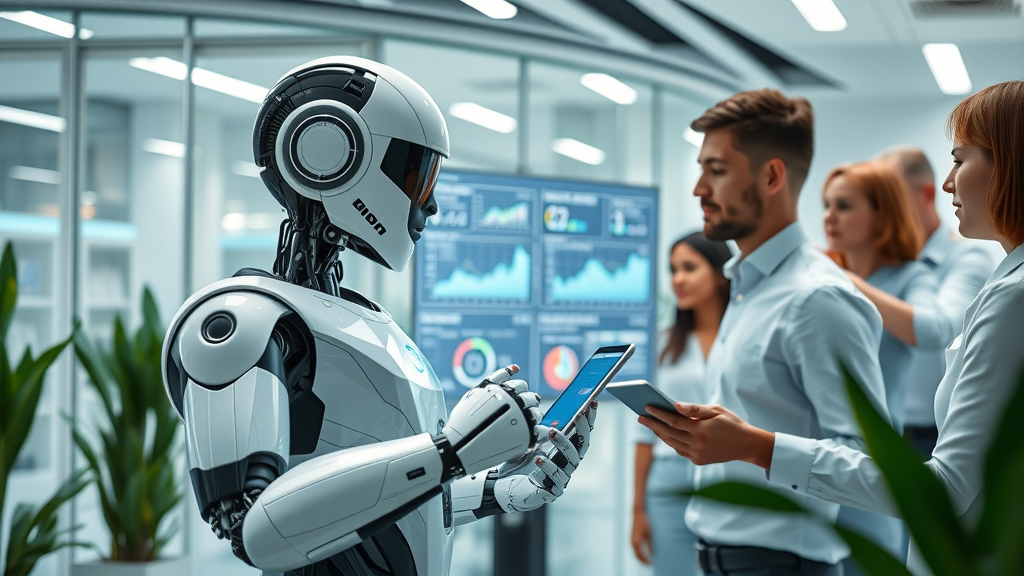
AI autonomy in robotics isn’t just about back-end efficiency; it’s fueling personalised marketing and superior customer experiences (CX) that drive loyalty and sales. Imagine a robot that tailors welcome messages to returning customers, or collects data on peak footfall to optimise future promotions. These robots can power interactive product demos, support after-hours inquiries with smart chatbots, and simplify complex marketing campaigns through automated data insights.
- Personalised customer engagement
- Data-driven campaign optimization
- Enhanced after-hours support
Forward-looking local marketers can leverage these tools for superior cross-channel targeting, responsive engagement, and smarter attribution. It’s an exciting time to integrate robotics into your marketing toolkit—especially as more businesses rely on data and automation to set themselves apart from the crowd.
Demo: Local Business Success Stories Using Autonomous Robotic Marketing Tools
Avoiding Headaches: Challenges with AI Autonomy in Robotics
Common Pitfalls in Implementing Autonomous Robotics
- Unexpected software glitches
- Integration with legacy systems
- Staff apprehension and training needs

While the benefits are tempting, autonomous robot rollouts come with real-world hitches—even in local settings. Many business owners report initial software bugs or robots getting stuck due to outdated store layouts. Integration with legacy point-of-sale or inventory systems can be tricky, requiring support from both IT and robotics vendors. Don’t underestimate the human side either: some staff may worry about job security or struggle with the learning curve. Addressing these challenges upfront—through careful planning, open communication, and clear ROI targets—prevents common pitfalls and ensures smoother transitions.
Solving Problems: Practical Tips for Small Business Owners
- Start with pilot projects
- Choose adaptable autonomous systems
- Invest in staff retraining
"The key to headache-free AI autonomy in robotics: focus on modular, scalable implementation and ongoing support."
Piloting a single mobile robot in a low-risk part of your operation lets you test, learn, and adapt before scaling up. Opt for autonomous robots that integrate with multiple platforms (think cloud-based software, wireless updates, or third-party APIs) to future-proof your investment. Most importantly, invest in training—help staff see how robots complement, not replace, human expertise. When your team feels empowered and invested, you boost retention and make the adoption of new technology a win-win for all.
Key Considerations: Security, Ethics & ROI in Autonomous Robotics
Data Protection and Cybersecurity in Autonomous Systems
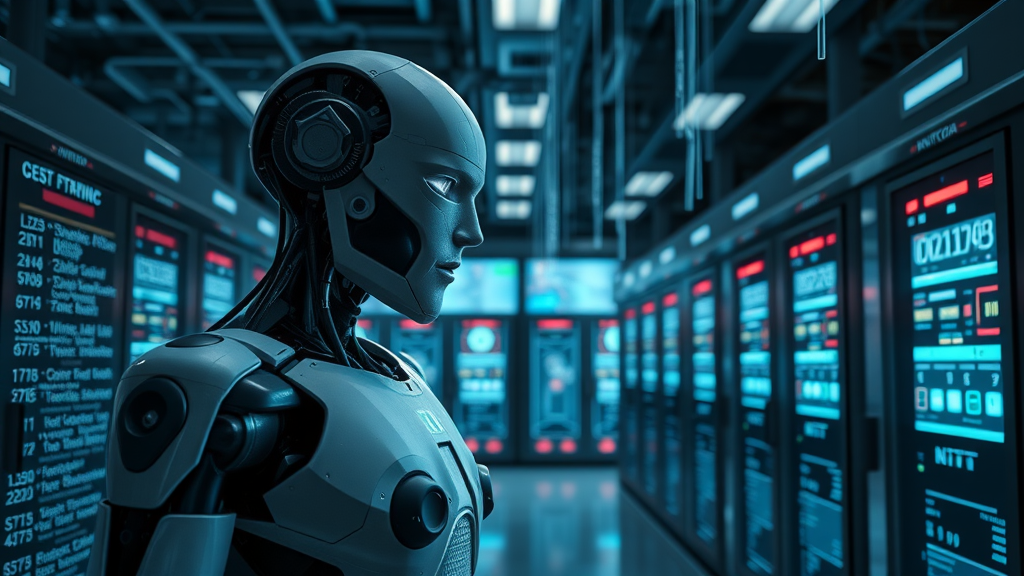
Security is non-negotiable with autonomous robotics. Each robot collects data—customer patterns, inventory, or even faces—making robust data protection and cybersecurity vital. Ensure your autonomous system encrypts transmitted data, regularly updates software, and is monitored for unusual activity. Stay ahead of potential cyber threats by working with vendors who prioritize security standards and compliance, especially when sensitive payments or customer information are at stake.
Ethical Deployment of AI Autonomy in Robotics
Deploying AI autonomy in robotics also raises ethical concerns—think privacy, employment shifts, and customer trust. Clear communication is essential. Let customers and employees know what data is being collected and how it’s used. Follow industry best practices and seek third-party audits where possible. Being proactive about ethics in autonomous robot use not only protects your reputation, but also differentiates your brand as transparent and responsible.
| Investment Measure | AI Autonomy in Robotics | Traditional Automation |
|---|---|---|
| Initial Outlay | Medium–High | Medium |
| Ongoing Costs | Low (energy & maintenance) | Medium (replacement parts, upgrades) |
| Time to ROI | 6–18 months | 12–36 months |
| Data Integration | High, with advanced analytics | Low–Medium |
| Adaptability | Very high | Low–Medium |
People Also Ask: AI Autonomy in Robotics in Practice
What does autonomy mean in robotics?
Autonomy in robotics refers to a robot’s capacity to perform behaviours or tasks independently based on its programming and environmental input, minimising the need for human intervention.
What is AI autonomy?
AI autonomy describes artificial intelligence systems capable of self-direction—making choices and adapting strategies without constant human guidance.
What are the levels of autonomy in robotics?
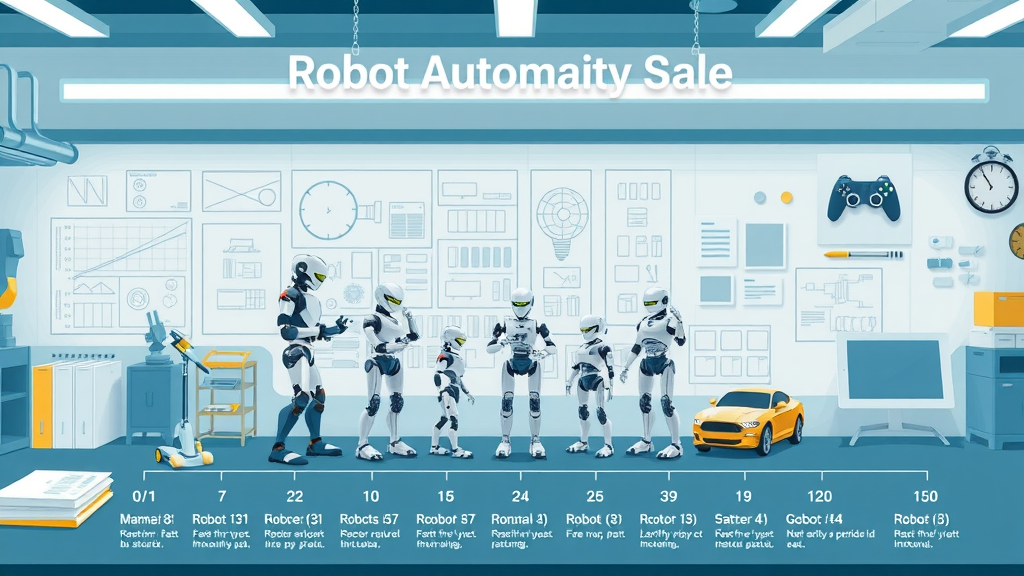
Levels range from remote-operated (low autonomy) to fully autonomous robots, which perceive, decide, and act independently in complex environments.
How is AI being used in robotics?
AI is used in robotics to enable perception, learning, problem-solving, and adaptive behaviour – powering applications from warehouse automation to customer service robots.
FAQs on AI Autonomy in Robotics for Local Business Owners
- Which types of businesses benefit most from autonomous robots? Retail stores, warehouses, cafes, and even clinics gain the most from robots handling repetitive, rule-based work that frees staff for customer engagement or sales.
- What upfront investment is required? Expect initial costs to vary—lease or buy single robots for $5,000–$20,000, depending on task complexity. Pilot projects reduce risk and clarify return on investment.
- How can I measure the success of autonomous robotics in my shop? Track time saved, error reductions, customer satisfaction, and increased sales or productivity post-automation.
- Can AI autonomy in robotics adapt to seasonal business fluctuations? Yes. Intelligent robots can be scheduled for high-traffic times or scaled back during slow periods, providing cost-optimized support all year round.
AI Autonomy in Robotics: Key Takeaways for Local Marketers
- AI autonomy in robotics delivers measurable results for local businesses
- Start simple, scale as you see ROI
- Stay aware of security and ethical factors
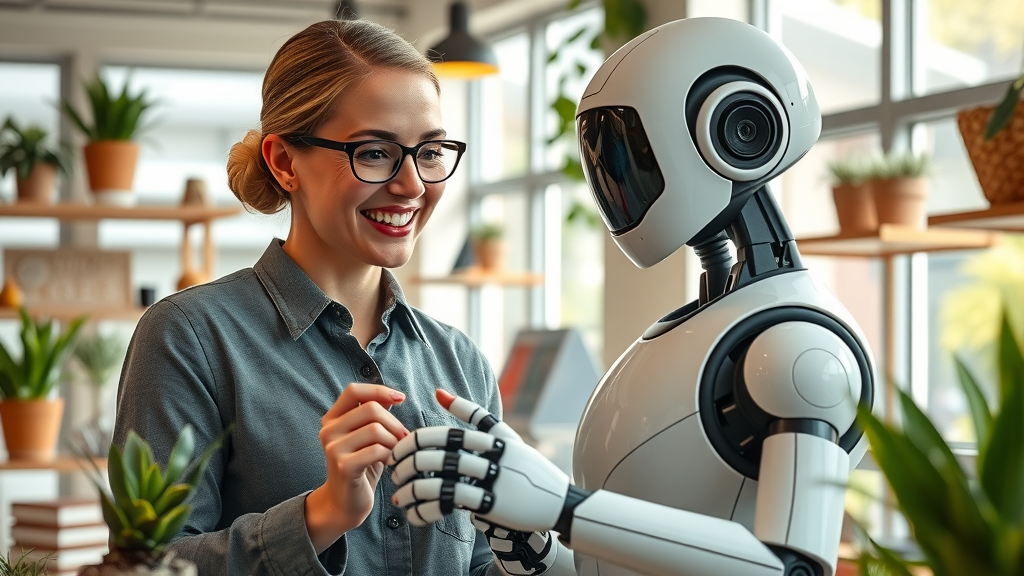
Final Thoughts: The Future of AI Autonomy in Robotics for Local SMEs
Looking Ahead: How Autonomous Robotic and Autonomous Systems are Redefining Business Success
As local businesses compete in rapidly changing markets, those who embrace AI autonomy in robotics will lead the way—unlocking new revenue streams, boosting resilience, and delighting both customers and teams.
"Embracing AI autonomy in robotics today is the smartest investment for tomorrow’s local business leaders."
We'd love to hear what you think about this? Please add your comments below...
To deepen your understanding of AI autonomy in robotics, consider exploring the following resources:
-
“Applying AI to Enable Autonomy in Robotics Using MATLAB”: This resource demonstrates how AI applications in robotics have expanded to include voice command, object identification, pose estimation, and motion planning. It highlights how AI-enabled robots are increasingly utilized in manufacturing facilities, power plants, warehouses, and other industrial sites. (mathworks.com)
-
“Supervised Autonomy: Why It Will Shape The Human-Robot Workforce Of The Future”: This article discusses how supervised autonomy bridges the gap between teleoperated robotics and full autonomy, allowing robots to perform specific tasks independently while keeping humans in the loop. It emphasizes the potential of supervised autonomy to improve worker safety and productivity by enabling robots to handle hazardous or repetitive tasks with minimal human intervention. (forbes.com)
If you’re serious about integrating AI autonomy into your robotics initiatives, these resources will provide valuable insights and practical strategies to guide your implementation.
 Add Row
Add Row  Add
Add 










Write A Comment